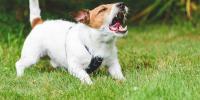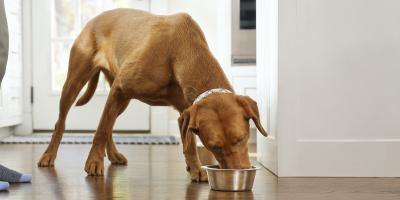Dog Hackles: Why Do Dog’s Hairs Stand Up?


You may have noticed your dog’s hair standing up on end from time to time. Maybe when they have been barking, or when they seem anxious. These hairs are called dog hackles and they run from your dog's head right to the bottom of their tail. Find out more about them, and why they present themselves.
What Are Dog Hackles?
A dog’s hackles are the hairs that run along your dog’s spine, and they are supported by a unique set of muscles. These muscles can cause the hackles to stand up and this can be a sign of excitement, fear, anxiety, or aggression. This is called piloerection.
Dogs do not have control over these muscles as they are triggered by an involuntary reflex. They are reactionary, meaning they are stimulated by the dog’s nervous system. The hackles stick up when the dog is in a state of heightened arousal, but many things can cause this.
What Causes Dog Hackles to Stand Up?
Raised hackles isn’t classed as a behavior as it is an involuntary reaction to external stimuli. There are a few reasons why you may see this reflex response in your dog, and contrary to popular belief it’s not always a sign of aggression.
Excitement
If your dog has an exuberant personality, their hackles may rise if they become overwhelmed with excitement such as meeting another dog or being in an exciting new place. Look at the rest of the dog’s body language. Are they wagging and wiggling with happiness? If so, you have nothing to worry about.
Curiosity
Hackles may also be a sign of curiosity or at least of suspicion. This can happen when they meet new people, a new dog or are taken to a new place with plenty of new smells. This is a sign to let them take things slowly and interact in their own time – and be ready to remove them from the situation if they seem worried or scared.
Aggression
Dog hackles going up is sometimes due to aggression or fear that can lead to aggression if not properly managed. For extra clues to help determine the underlying reason, it is important to look at other elements of body language. Raised hackles due to dog aggression is usually accompanied by other behaviors such as barking, growling or showing teeth – or backing away. Remove them from the situation immediately and if this becomes a frequent response, seek expert help from a qualified animal behaviorist.
Anxiety
Anxiety in dogs can manifest in various different forms. From a tail between their legs to their hair standing up. This response can be triggered by meeting a new person, a new dog, being taken to a new place, or being taken to the vet. It is important to look at the rest of the dog’s body language to work out what emotions are behind this reaction. Is it fear, is it uncertainty, do they want to approach or are they likely to show a potentially reactive response?
What Do I Do if My Dog’s Hackles Are Raised?
Dogs pick up on our emotions and behavior, so it is important to try to remain calm and not overreact in any situation that is causing your dog’s hair to stand up. Determining why your dog’s hackles have gone up is important so that any behavioral issues can be addressed if necessary. Most often, it is nothing to worry about and if you know your own dog well, you will know when this is likely to happen and what it means.
Consider the environment, whether it is familiar or new, or whether there are new people, dogs or objects surrounding your dog.
If you notice that your dog’s hackles have gone up due to excitement, then there is nothing to worry about. In this situation, the rest of their body language may suggest play – the play bow where a dog lowers their front end for example.
However, if your dog is feeling anxious or fearful or you are concerned that the signs may suggest aggression, always approach the situation with caution and where possible, remove your dog from the situation. It is important to pay attention to your dog’s body language to determine what has caused your dog's hackles to stand up.
Are Hackles More Obvious in Certain Dog Breeds?
Yes, there are some dog breeds that show their hackles more often than others. These breeds tend to have shorter, finer hair. Raised hackles in breeds with long, curly or thick coats will be much less obvious, and you might not be able to see piloerection at all. Whatever the underlying cause, a dog’s hackles will subside and lay flat when the dog has calmed down.
When it comes to dogs raising their hackles, there can be a wide range of meanings and you have to take the situation and the rest of your dog’s body language into account to get to the bottom of what this display means. Taking context into account is important so you know how to respond. In most cases, especially if you don’t know what the triggers might be, the best way to deal with this is to distract the dog, get their focus onto something else, and move away from the situation. If you have any concerns – or you don’t know what is causing the piloerection, contact a behaviorist who can come and decode your dog’s hackles.
Now that you know all about dog hackles, and what they are, why not discover more about different dog growls and what they mean, next?
Want more expert tips on dog behavior? Explore our other understanding dogs articles.
Related articles

Reward Yourself with myPurina
Earn and redeem rewards for Purina products with the myPurina app.






